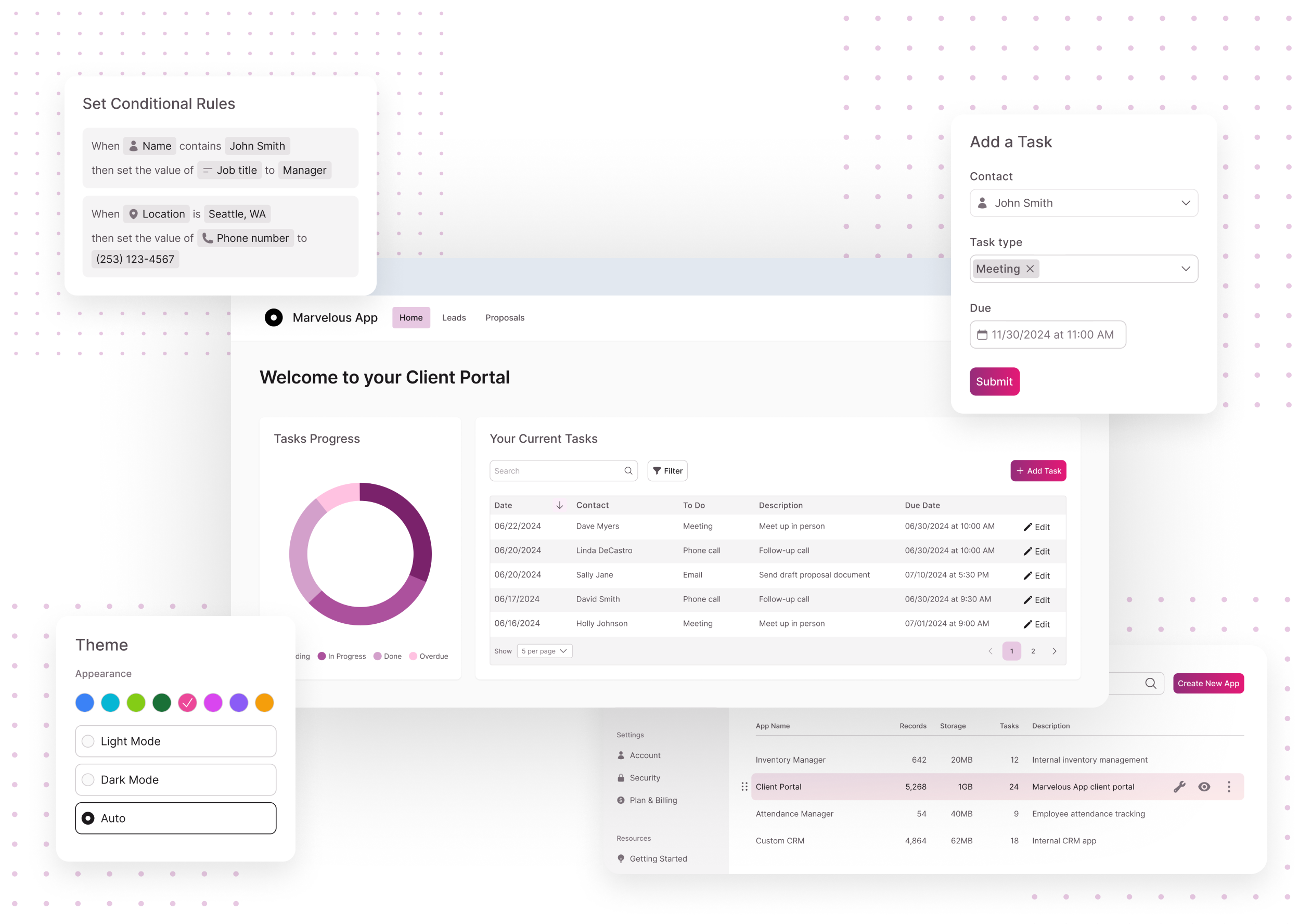Discover Exactly How Scalable Data Sources Can Be Used Without Coding to Improve Your Organization Procedures
In today's busy service setting, the ability to handle and evaluate data successfully is extremely important. Scalable data sources, specifically when combined with no-code solutions, supply a transformative approach that equips non-technical users to enhance operations. By using devices that call for no coding proficiency, companies can enhance their functional capacities while decreasing reliance on IT sources. Nevertheless, the actual concern hinges on comprehending just how these remedies can be tailored to specific service demands and what potential hurdles may emerge in their execution. Discovering these aspects can illuminate the course to functional excellence.
Recognizing Scalable Databases
Scalable databases are essential for modern service procedures, allowing organizations to successfully handle enhancing volumes of data without compromising efficiency. These data sources are designed to adjust and grow to the altering demands of an organization, making certain that they can handle bigger datasets and even more complex questions as organizational demands evolve.
Recognizing scalable databases includes identifying their two main types: vertical scaling and horizontal scaling. Upright scaling, or "scaling up," includes including more power (CPU, RAM) to an existing server to improve performance. Conversely, horizontal scaling, or "scaling out," requires including a lot more web servers to distribute the lots, which often results in better adaptability and mistake resistance.
Another critical aspect is the style of scalable data sources, which can be either non-relational or relational. Relational data sources, such as MySQL and PostgreSQL, are structured and use SQL for queries, while non-relational data sources, like MongoDB and Cassandra, provide even more flexibility with unstructured information.
Inevitably, comprehending scalable databases is vital for businesses aiming to take advantage of information as a critical property, enabling them to stay competitive in an increasingly data-driven setting.

Benefits of No-Code Solutions
Opening the potential of no-code remedies empowers organizations to improve procedures and enhance productivity without the requirement for substantial shows expertise. These platforms allow non-technical individuals to produce, change, and handle databases easily, therefore equalizing access to modern technology throughout teams.
One of the key advantages of no-code solutions is their speed of implementation. Companies can rapidly release applications and automate processes, significantly minimizing the moment invested in development cycles. This agility allows organizations to react quickly to market modifications and customer demands, fostering an affordable side.
Additionally, no-code systems reduce reliance on IT departments for day-to-day tasks, enabling technological groups to concentrate on more complex projects that require specialized skills. This shift not only enhances source allocation however likewise promotes advancement within the organization.
Cost-effectiveness is another advantage, as no-code remedies can lower advancement and maintenance costs. By decreasing the demand for coding proficiency, companies can harness the capacities of their existing workforce without the expenses of working with extra personnel.
Popular No-Code Data Source Tools
The rise of no-code remedies has caused the appearance of numerous database tools that cater to businesses looking for performance and availability. These tools empower customers with restricted technological knowledge to develop, handle, and adjust data sources perfectly.

Caspio stands out for its ability to build internet applications without any type of coding. It permits businesses to produce durable databases and deploy applications rapidly, dealing with various industry needs. Knack provides straightforward interfaces and powerful data monitoring abilities, making it possible for organizations to construct customized applications customized to their operations.

Usage Cases in Service Workflow
Just how can organizations take advantage of database devices to boost their operations? Scalable databases give organizations with effective capacities to take care of and evaluate data without the requirement for extensive coding knowledge. These tools can improve different service processes, ultimately bring about enhanced effectiveness and performance.
One famous use situation is client partnership monitoring (CRM) Companies can use scalable data sources to track client communications, preferences, and comments, enabling individualized communication and better solution. By streamlining this details, groups can work together extra efficiently and react to consumer demands in real-time.
Another significant application is stock management. Firms can utilize no-code database tools to monitor supply levels, track shipments, and forecast demand. This makes certain optimal supply levels, reduces waste, and reduces stockouts.
Additionally, task monitoring can gain from scalable databases by permitting groups to manage jobs, deadlines, and sources in an unified system. With real-time updates and information visualization, task supervisors can make enlightened choices.
Getting Began With Application
Implementing scalable databases in service operations needs an organized approach to ensure effective combination and utilization. The initial step is to perform a comprehensive needs analysis, identifying particular company needs, data kinds, and anticipated development patterns. This fundamental understanding will guide the selection of the proper database solution.
Following, choose an easy to use, Full Report no-code database system that straightens with your functional goals. no-code. Numerous modern options provide instinctive interfaces, enabling non-technical users to take care of data successfully. After selecting a platform, develop a clear information architecture that details exactly how information will be organized, accessed, and kept
Training is important; ensure that staff member are geared up with the necessary abilities to make use of the database. Consider providing workshops or tutorials to familiarize personnel with the system's capabilities.
Conclusion
In conclusion, the assimilation of scalable databases through no-code services offers substantial benefits for company operations. Ultimately, leveraging these modern technologies can lead to boosted performance and operational performance, positioning services for continual growth in a competitive landscape.
One prominent no-code data source device is Airtable, which incorporates the functionality of a spreadsheet with the power of a data source.Just how can businesses leverage data source devices to boost their procedures? Businesses can make use of scalable databases to track client interactions, choices, and comments, making it possible for personalized interaction and far better solution.Carrying out scalable data sources in service procedures needs a structured strategy to make sure successful assimilation and application.In verdict, the assimilation of scalable data sources with no-code remedies offers substantial benefits for service procedures.